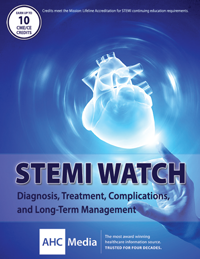White Coat Hypertension Not Always Benign for Subset of Patients
November 18th, 2016
IRVINE, CA — White coat hypertension is common and usually benign, according to a new study.
The concern, however, is the small group of older patients where elevated blood pressure can indicate greater risk for cardiovascular disease, according to a study published online in the Journal of the American College of Cardiology.
The condition was identified more than 30 years ago and is thought be the result of patients feeling stressed in a medical setting or in the presence of clinicians in "white coats,” according to background information in the report, which adds that white coat hypertension occurs more frequently in older patients and the difference between the blood pressure readings in the office and outside tends to increase with age.
To find out if and when white coat hypertension is an indicator of increased risk for heart disease, a University of California, Irvine-led research team used the International Database on Ambulatory Blood Pressure in relation to Cardiovascular Outcomes. The study focused on about 1,300 patients, comparing the half identified with white coat hypertension to patients of similar age and similar risk for developing heart disease without the condition.
Results indicate that, during a follow-up period of about a decade, no difference was detected in the number of new heart-related health events when younger subjects with white coat hypertension, defined as those below age 60, with normal blood pressure were compared to those of a similar age and risk profile.
That was not the case with older patients, however. The study found that, out of 92 high-risk subjects age 60 and older, 18 more new cardiovascular events occurred in the follow-up period for those diagnosed with white coat hypertension vs. the same number of subjects of similar age and otherwise similar risk profile with normal blood pressure.
The results support the hypothesis that a small number of patients considered to have white coat hypertension actually have isolated systolic hypertension, where systolic blood pressure is too high but diastolic blood pressure is normal, according to the researchers, who add that systolic hypertension can be an indicator of risk for future heart disease or stroke.
Study authors recommend multiple blood pressure readings, including some outside a clinical setting, to accurately identify cardiovascular risk, especially in older high-risk patients.
In an accompanying editorial, Giuseppe Mancia, MD, and Guido Grassi, MD, of the University of Milano Bicocca in Italy questioned whether the study group was large enough or long enough in duration to accurately identify risk in the younger patients.
Mancia and Grassi suggested that the conclusions about younger patients may not be accurate, and more research is needed to fully understand the complexities of white coat hypertension.

FEATURED RESOURCE



